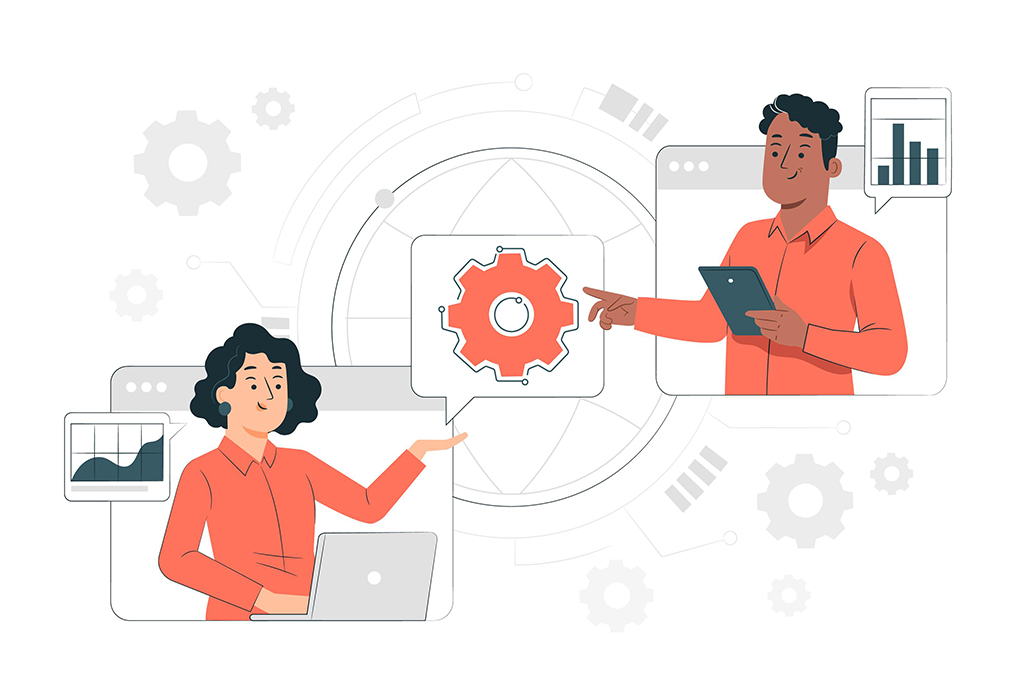Field service is a complex business that has become that much more intricate in the current climate. The pandemic exposed gaps in service delivery that forced the industry to accelerate transformation plans and find solutions to the retiring workforce issue sooner rather than later. Furthermore, post-pandemic labor shortage, lack of organizational alignment, environmental sustainability, and evolving customer expectations have put increased pressure on service organizations to adapt their business models.
Author Radiana Pit | Copperberg

Photo: Freepik
Digitalization has emerged as the best and perhaps only solution to this entire conundrum. Otis, a global manufacturer of elevators, escalators, moving walkways, and other related equipment, has realized that this is the only way forward. The company’s Nordics Director of Major Projects, Muharrem Cinay, has joined the conversation at the Field Service Forum 2022, to share how Otis’ different digitalization projects and initiatives have come to play an important part in the company’s field service performance.
The keynote session provided a much-needed roadmap for successful technology adoption and deployment within the organization. Let’s explore the main takeaways below and learn what it takes to become a field service organization (FSO) that leads by example.
Connectivity—the catalyst for change
Before the pandemic, the world started to become smaller. Connective technology, the Internet of Things (IoT), and smart devices brought everyone closer together, bridging the gap between customers and providers. At a time when pandemic-related restrictions made service delivery cumbersome, connectivity swiftly became ubiquitous and indispensable.
A journey that once started with only a few connected devices has changed the world of business, now connecting industries and everything in between, so much so that Otis expects there to be 50B connected devices by 2023. This gives a whole new dimension to the industrial catchphrase “the future is connected.” This also leads us to another influential catchphrase within the industry: “the future is smarter.” Indeed, everything being connected means that everything is getting smarter too. And this is becoming more apparent when looking at Otis’ service performance.
Using connected sensors, the company is able to collect data from HVAC equipment, lighting, security badges, and more in order to analyze occupancy and manage efficiencies. Next, machine learning (ML) and artificial intelligence (AI) leverage that data to identify patterns and enable devices to autonomously adjust in real-time, whether that’s dimmer lighting on sunny days or minimal heating when a building is empty.
These key technologies then allow for predictive actions to be taken. By leveraging the data in the cloud, applying sophisticated algorithms, and creating new processes, Otis is able to focus on the equipment lifecycle and tend to it before it fails. Before something even breaks down, the company uses data insights to control the outcome.
Turning data into outcomes
It only takes three steps to turn data into outcomes: gather information, transfer it, and derive insights from it. Otis gathers data through equipment monitoring but also from field technicians and transfers it through a gateway to the cloud in real-time. The insights are also derived in real-time using big data analytics and sophisticated algorithms.
The results of this process are a transparent view of service, proactive real-time communications, and predictive maintenance that reduces the number of shutdowns. Likewise, data has provided Otis with significant insights into what digitalization means for its business, including customers, equipment, supply chain, and field technicians.
For its customers, digitalization created a superior experience, providing more customer portals, quick and easy access to relevant information from their mobile devices, the ability to place orders without time-consuming interactions with sales staff, more transparency and real-time visibility into the company’s products and services, and remote support.
On top of these digital solutions, the company was also able to provide its customers with robot integrations. The Otis Integrated DispatchTM is a cloud-based or on-premise API solution for integrating service robots with elevators, enabling more elevator data than traditional hard-wired integrations.
When it comes to the Otis equipment, digitalization provided an opportunity to expand the offering and accommodate pandemic-related demands with IoT solutions, smart screens, touchless buttons, digital logbooks, and remote interventions using mobile apps. This has also made it easier for technicians to deliver field service, with mobile apps facilitating remote support, safety assurance, and real-time access to expertise.
Furthermore, the impact of Otis’ digitalization projects has helped the company limit its carbon footprint, which is becoming an increasingly important initiative for field service leaders around the world. Alongside other supply chain initiatives such as 3D manufacturing to produce new parts, the company has also turned to just-in-time (JIT) manufacturing, which although it is a production model that has been around for some time, has become more relevant in the wake of the freight issues in China.
Personalizing service experience
The new levels of digital maturity and connectivity in the industry are impacting service delivery in even more ways than the ones discussed so far. Everyone and everything is connected now, and while everyone expects something, not everyone expects the same thing. This has an impact on the service experience.
Realizing the distinctions in customer expectations, Otis leverages its customer portals, apps, campus view, and transparent scorecard to provide customizable features, relevant updates, and tailored communications to meet the specific needs of its customers and ensure contract compliance.
The company also has a proactive approach to customer demands. Through active monitoring and real-time elevator status, Otis is able to improve responsiveness, execute informed repairs, enable trapped passenger communication, and provide additional insights during repairs to speed up the process and improve the first-time fix rate.
Additionally, predictive solutions and active monitoring enable the company to measure how much drive and usage their equipment involves and gather the necessary data to take preemptive action for the right customer at the right time.
Change management
The industry is changing due to digitalization, globalization, and other macro-environmental developments that demand sustainable solutions, supply chain resilience, and superior service delivery. This creates a huge struggle within the industry to encourage openness to change and the implementation of new technology.
For Otis, the changes that were born out of their digitalization projects have led to significant outcomes. But achieving that level of change didn’t come without its challenges. As such, the company relied on the ADKAR method to facilitate success:
- Awareness: leading people to see the need for change by communicating effectively, making business information accessible, and coaching by manager or supervisor;
- Desire: establishing the desire for change by anticipating resistance, engaging employees in the change process, and equipping managers to be effective change leaders;
- Knowledge: providing employees with the information or skills they need to achieve change by having one-on-one coaching sessions, making user groups and forums, and creating effective in-house training and education programs;
- Ability: applying knowledge and skills to bring about change by performing hands-on exercises, ensuring the day-to-day involvement of supervisors, and providing access to subject matter experts;
- Reinforcement: ensuring that people continue to use the new methods by rewarding them, collecting feedback from employees, and celebrating and recognizing successes.
These five steps for successful change management alongside Otis’ deployment of new solutions and offering expansion provides a valuable roadmap for digitalization. Drawing from the insights of a service organization that leads by example, FSOs can steer the wheel toward service excellence and a smarter, more connected future.






























